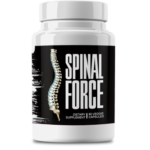This Village-Made Chinese Pain Reliever Eliminates Back And Joint Pain!
Why You Get Elbow Pain When Bending and Straightening (Solved)

Why Your Elbow Hurts When Bending and Straightening (And How to Fix It)
That sharp twinge when you bend your elbow to take a sip of coffee or the dull ache when straightening your arm after a workout—sound familiar? Elbow pain during movement can turn simple tasks into frustrating challenges. Whether you're an office worker, weekend athlete, or just going about your daily routine, understanding what's causing your discomfort is the first step to fixing it. Let's explore why this happens and—most importantly—how to get you back to pain-free movement.
What's Really Going On When Your Elbow Hurts?
Your elbow isn't just a simple hinge—it's a sophisticated joint where bones, tendons, and ligaments work together. When something's off in this system, bending and straightening becomes painful. Here's what might be happening under the surface.
The Usual Suspects Behind Elbow Pain
When patients come to me with elbow pain, these are typically the culprits:
- Angry tendons (hello, tennis elbow or golfer's elbow)
- Worn-out joints (thanks, arthritis)
- Inflamed cushions (bursitis acting up)
- Pinched nerves (cubital tunnel syndrome, anyone?)
How Your Elbow Tells You Something's Wrong
Your body has its own way of sending distress signals. You might notice:
- Pain that ranges from sharp stabs to constant aches
- Stiffness that makes your arm feel rusty
- Swelling that makes your elbow look puffy
- Weakness when you try to open jars or shake hands
When It's Time to Call the Doctor
While some elbow pain improves with rest, don't tough it out if you experience:
- Pain that overstays its welcome (more than a few weeks)
- Swelling that makes your elbow look like a balloon
- An arm that won't fully straighten or bend
- Creepy tingles or numbness in your fingers
The Top Reasons Your Elbow Complains
Let's play detective and uncover what's really causing your discomfort.
Tennis Elbow (Even If You've Never Held a Racket)
Don't let the name fool you—this overuse injury loves office workers, painters, and DIY enthusiasts just as much as athletes. It's all about those overworked forearm tendons.
Golfer's Elbow (Not Just for the Country Club Set)
This pesky cousin of tennis elbow targets the inner elbow instead. Weightlifters, rock climbers, and anyone who grips things repeatedly often develop this.
Bursitis: Your Elbow's Overworked Shock Absorbers
Those tiny fluid-filled sacs? When they get inflamed from too much pressure or friction, they protest with pain and swelling.
When Arthritis Joins the Party
Whether it's osteoarthritis from wear-and-tear or rheumatoid arthritis's immune system mix-up, both can make your elbow joint stiff and painful.
Why Your Daily Habits Might Be the Problem
Often, our everyday activities—not dramatic injuries—are the real villains behind elbow pain.
The Repetitive Motion Trap
Your elbow wasn't designed to do the exact same motion hundreds of times daily. Those tiny tendon tears from repetition add up fast.
Jobs and Hobbies That Put You at Risk
Construction work, assembly lines, tennis, golf—if your activity involves constant arm movements, your elbows are on the front lines.
How Your Workspace Might Be Sabotaging You
That awkward keyboard position or poorly adjusted chair? They're stealthy contributors to elbow strain over time.
Getting to the Bottom of Your Elbow Pain
Proper diagnosis means targeted treatment. Here's what to expect.
The Doctor's Detective Work
Your physician will play 20 questions about your pain while testing your range of motion and checking tender spots.
Peeking Inside With Imaging
X-rays show bone issues, MRIs reveal soft tissue damage, and ultrasounds can spot inflamed tendons in real-time.
When It's Time to Bring in the Specialists
If basic treatments don't help, an orthopedic doc or rheumatologist might need to step in.
Your Roadmap to Pain-Free Movement
The good news? Most elbow pain improves without surgery.
The RICE Method (Your First Line of Defense)
Rest, Ice, Compression, Elevation—plus anti-inflammatories—can work wonders for acute flare-ups.
Physical Therapy: Your Elbow's Personal Trainer
A good PT will teach you targeted stretches and strengthening exercises to rehab your elbow properly.
Braces: Your Temporary Support System
Elbow straps or braces take pressure off angry tendons while they heal.
When Surgery Becomes an Option
Reserved for severe cases, surgical fixes might include removing damaged tissue or repairing torn tendons.
Keeping Elbow Pain at Bay
Prevention is always better than treatment. Try these proactive measures.
Stretches Your Elbow Will Thank You For
Gentle wrist flexor and extensor stretches can work wonders for tight forearms.
Workspace Tweaks That Make a Difference
Adjust your chair height, position your keyboard properly, and take frequent breaks—your elbows will notice.
Building Arm Resilience
Light resistance exercises can strengthen the muscles supporting your elbows, preventing future issues.
Your Elbow Pain Questions, Answered
Will This Pain Ever Go Away?
Most mild cases do improve with time and proper care, but stubborn pain needs professional attention.
How Long Until My Tennis Elbow Heals?
Patience is key—recovery typically takes 6-12 months depending on severity and treatment.
What Happens If I Ignore the Pain?
Chronic weakness, permanent joint damage, and limited mobility can result from untreated persistent pain.
Wrapping It Up
The Bottom Line: Most elbow pain stems from overuse and responds well to conservative treatment. The key is listening to your body and addressing issues early.
Final Thought: Your elbows work hard for you—give them the care they deserve. If pain persists beyond a few weeks, don't hesitate to seek professional help. After all, life's too short to wince every time you reach for something!








